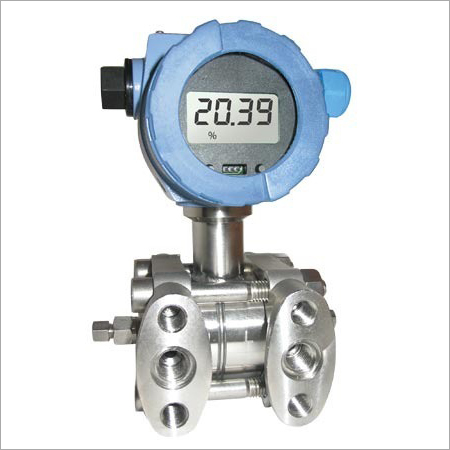
Differential Pressure Transmitters
7800 आईएनआर/Unit
उत्पाद विवरण:
- रंग Blue, Sliver
- साइज Standard
- उपयोग Industrial
- बिजली की आपूर्ति Electric
- डिस्प्ले टाइप
- Click to view more
X
डिफरेंशियल प्रेशर ट्रांसमीटर मूल्य और मात्रा
- 100
- यूनिट/यूनिट
- यूनिट/यूनिट
डिफरेंशियल प्रेशर ट्रांसमीटर उत्पाद की विशेषताएं
- Standard
- Electric
- Blue, Sliver
- Industrial
डिफरेंशियल प्रेशर ट्रांसमीटर व्यापार सूचना
- 500 प्रति सप्ताह
- 3 दिन
उत्पाद विवरण
Differential pressure transmitter is a widely user industrial pressure measuring instrument, which can sense the pressure difference between two ports as well as generate an output signal with reference to a calibrated pressure range.
The industrial differential pressure transmitters comprises two housings. Bottom half has a pressure sensing element and top half has the electronics. Both have two pressure ports marked as Low and High. Its not a compulsion that high port will always remain at high pressure and the low port always remain at low pressure. These ports are labeled so because of their relation to the effect of the port on the output signal.
Construction of Differential pressure transmitter
There are three functional parts of a differential pressure transmitter:
Direct Pressure sensing element (based in the lower housing).
Major industrial Direct Pressure Transmitters have a diaphragm as a pressure sensing element. Diaphragm is an mechanical device situated in between the two pressure inlet ports. Applied pressure would deflect this mechanical device. The deflection often is converted into an electrical signal by the sensor. The sensors that could be used in it are:
Differential Capacitance
Strain Gauge
Vibrating wire
The sensor output is proportional to the applied pressure.
Electronic Unit
The sensor in the lower chamber generates electrical signal in the range of milli-volt only. Either the signal is converted to 4-20mA for onward transmission to a remote instrument or amplified to 0-5V or 0-10V range. The DP transmitters upper housing is the transmitter portion that houses the Electronic Unit.
2-Wire 4-20mA Current Transmitter
A DC output current is generated which is directly proportional to the pressure range of the Differential Pressure Transmitter. 20mA is the upper range and 4mA is the lower range. Supply voltage fluctuations and load impedance variation doesnt affect the controlled current output. The 4-20mA output is superimposed with digital communications of HART FSK or BRAIN protocol.
Industrial applications of Differential Pressure Transmitters:
There are many industrial applications of Differential Pressure Transmitters, some of which are listed below:
- Monitoring of sprinkling system.
- Monitoring of pump control.
- In the effluent and water treatment plants, it is utilized for monitoring filters.
- Gas and oil flow metering in offshore, onshore and subsea applications.
- Monitoring of pressure drops across valves.
- Remote sensing of Heating Systems for Hot or Steam Water.
Product details
|
Housing Material |
Aluminum Alloy |
|
Voltage |
12-24V |
|
Usage/Application |
Industrial |
|
Output Signal |
4-20mA/Hart, Profibus-PA |
|
Brand |
Fuji |
|
Pressure Range |
100kp-10MPa |
|
IP Rating |
IP67 |
|
Housing Material |
Aluminum Alloy |
Tell us about your requirement

Price: Â
Quantity
Select Unit
- 50
- 100
- 200
- 250
- 500
- 1000+
Additional detail
मोबाइल number
Email



